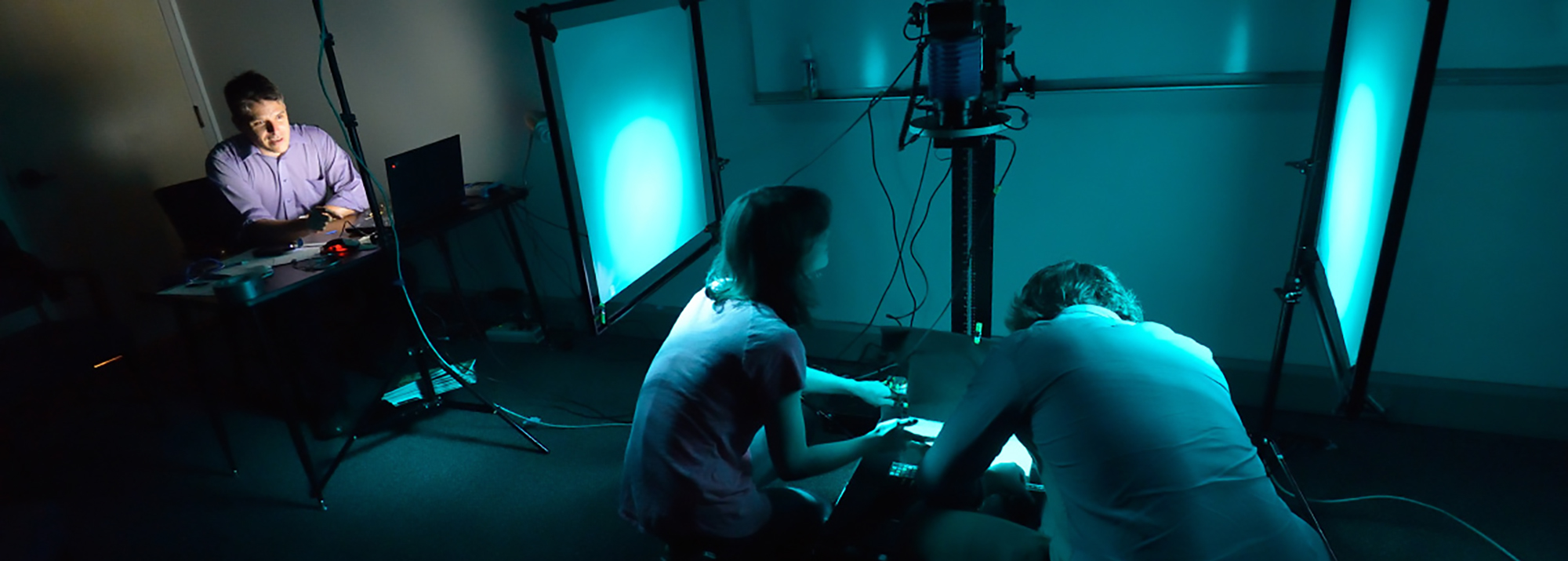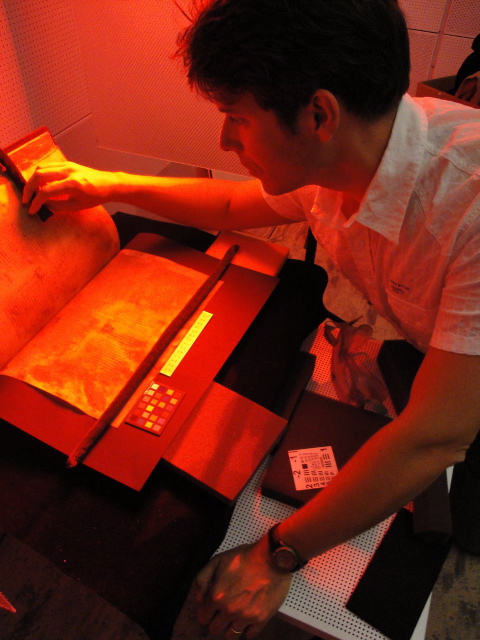
Multispectral imaging is a technique to recover and preserve damaged or illegible texts. This imaging technology makes palimpsests readable (both the under and the over text), discerns erased words, and even recovers manuscripts bombed during WWII.
Main, auxiliary and transmissive lights produce a controlled spectrum of light which our specialized camera then records. The bands of light range from the short reflective bands of UV through the visible spectra and into the long wave bands of infra red. The different bands of light, particularly when combined in later processing, produces an image of the material which the naked eye cannot see.
Multispectral imaging was first applied to manuscript recovery by the team working on the Archimedes Palimpsest Project. We work closely with many of the original scientists from this groundbreaking project, including Roger Easton and Keith Knox. As part of the Lazarus Project, these scientists and others continue to perform groundbreaking research at top libraries and institutions around the world, including Cambridge University, the Beineke Library, the New York Public Library, the National Library of Wales, and many more.
The Mission of the Lazarus Project is Threefold:
- To facilitate manuscript recovery by providing researchers with free access to multispectral technology.
- To train students and textual scholars in the use of multispectral technology and image rendering and in the scientific disciplines of the new codicology.
- To collect data and metadata on damaged manuscripts as a basis for subsequent scholarship.
Our model is a pedagogical model. We help train and work with students at the University of Rochester. Graduate students in the Department of English now write dissertations based on materials not seen this clearly in hundreds of years. Students at the have the opportunity to travel with the Lazarus Project, learn developing Digital Humanities techniques and include first-hand, original research in their honor’s theses.
Media Coverage
The Lazarus Project has appeared in the news several times recently:
- U or R Researchers Study Lost Text in Centuries-old Manuscript
- Chartres Imaging Project
- Ted Talk by Dr. Gregory Heyworth
- Mental Floss: When Ancient Texts Vanish, These Scientists Make Them Reappear
- The Chronicle of Higher Education: New Imaging Methods Shine Light on Hidden Texts
- Folger Library on Shakespeare’s signature
- Ars Technica on the Shakespeare Project
- National Endowment for the Humanities discussing the Martellus Map: Columbus Sailed Here! Multi-Spectral Imaging of an Important 15th Century World Map and Imaging Technology Reveals 15th-Century Cartographer’s World View
- “Multispectral Imaging Could Reveal Secrets Of Martellus Map” on National Public Radio’s All Things Considered, September 17, 2014
- “Did This Map Guide Columbus?” (additional material) by Elizabeth Quill, Smithsonian Magazine, June 2015, p. 12
- “Treasured 16th-Century ‘Lenox Globe’ Gets a Digital Makeover” by Tanya Lewis, LiveScience.com, January 14, 2015


